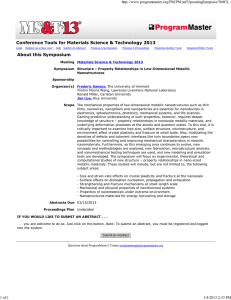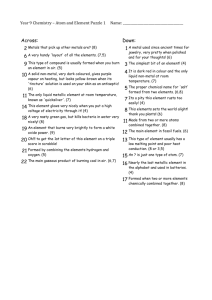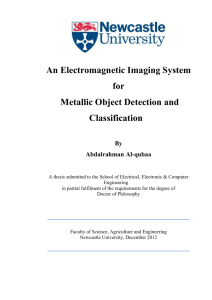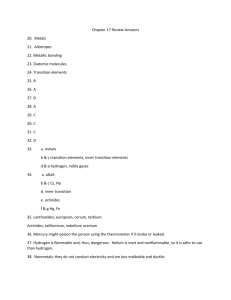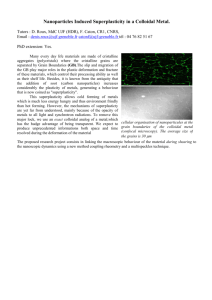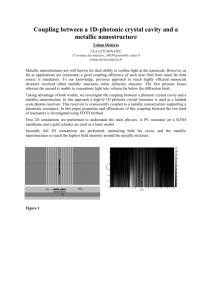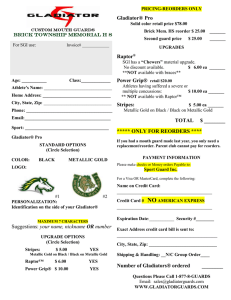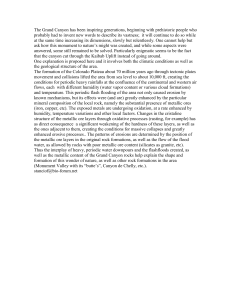Module Description 2012/13
advertisement
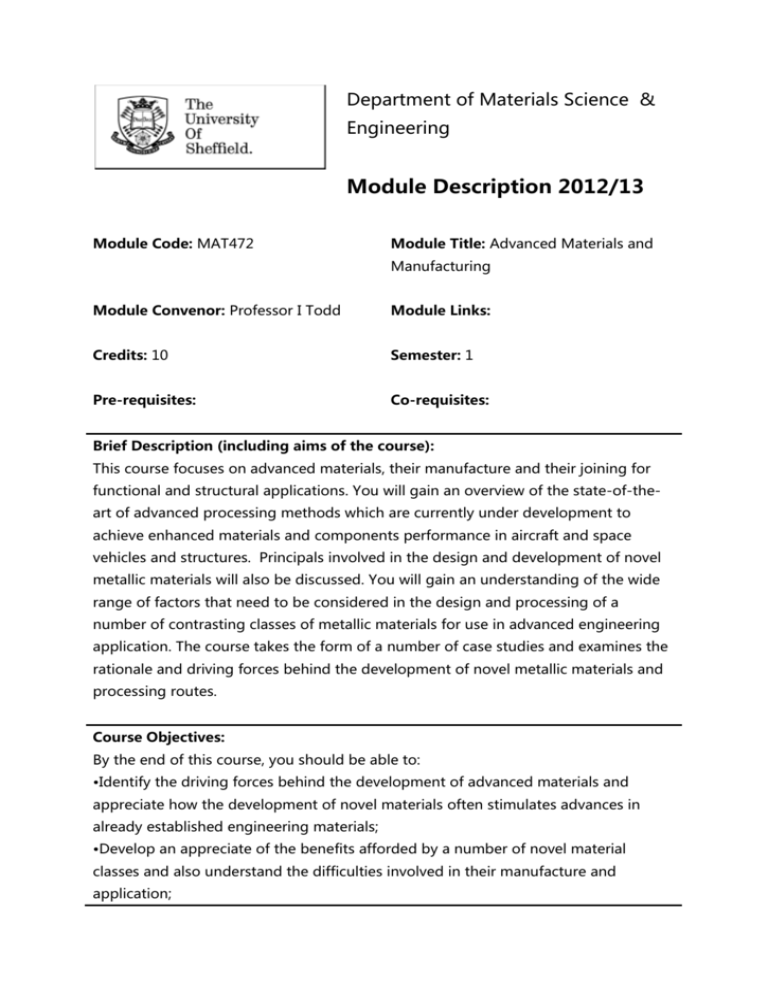
Department of Materials Science & Engineering Module Description 2012/13 Module Code: MAT472 Module Title: Advanced Materials and Manufacturing Module Convenor: Professor I Todd Module Links: Credits: 10 Semester: 1 Pre-requisites: Co-requisites: Brief Description (including aims of the course): This course focuses on advanced materials, their manufacture and their joining for functional and structural applications. You will gain an overview of the state-of-theart of advanced processing methods which are currently under development to achieve enhanced materials and components performance in aircraft and space vehicles and structures. Principals involved in the design and development of novel metallic materials will also be discussed. You will gain an understanding of the wide range of factors that need to be considered in the design and processing of a number of contrasting classes of metallic materials for use in advanced engineering application. The course takes the form of a number of case studies and examines the rationale and driving forces behind the development of novel metallic materials and processing routes. Course Objectives: By the end of this course, you should be able to: •Identify the driving forces behind the development of advanced materials and appreciate how the development of novel materials often stimulates advances in already established engineering materials; •Develop an appreciate of the benefits afforded by a number of novel material classes and also understand the difficulties involved in their manufacture and application; •Demonstrate an understanding of the methods of non-equilibrium processing; •Demonstrate knowledge of how non-equilibrium microstructure can be used to enhance properties; •Display an appreciation of advanced methods for forming metals into a complex shape; •Demonstrate awareness of the metallurgical requirements for joining advanced metallic materials. Assessment: Exam: 100% Booklist (A) Core Test; (B) Secondary Text; (C) Peripheral Reading: The course is based on a set of notes produced by the lecturer: There are no textbooks wholly suited to the course. The following are all therefore secondary texts offering support on materials concepts central to the course: B) Pilling, J. and Ridley, N., “Superplasticity in Crystalline Solids”, The Institute of Materials, 1989. (B) Nieh, T.G. et al, “Superplasticity in Metals and Ceramics”, Cambridge University Press, 1997. (B) Lu, L. and Lai, M.O., “Mechanical Alloying”, Kluwer Academic Publishers, 1998. (B) Suryanarayana, C., “Non-equilibrium Processing of Materials”, Pergamon, 1999. (B) Jones, H., “Rapid Solidification of Metals and Alloys”, The Institution of Metallurgists, 1982. (B) Martin, J.W. et al., “Stability of Microstructure in Metallic Systems”, Cambridge University Press, 1997. (B) Ashby, M.F. et al., “Metal Foams: A Design Guide”, Butterworth Heinemann, 2000. (B) Steen, W.M., “Laser Material Processing”, Springer-Verlag, 1991. (B) Pawlowski L., “The Science and Engineering of Thermal Spray Coatings”, Wiley, New York, 1995.
